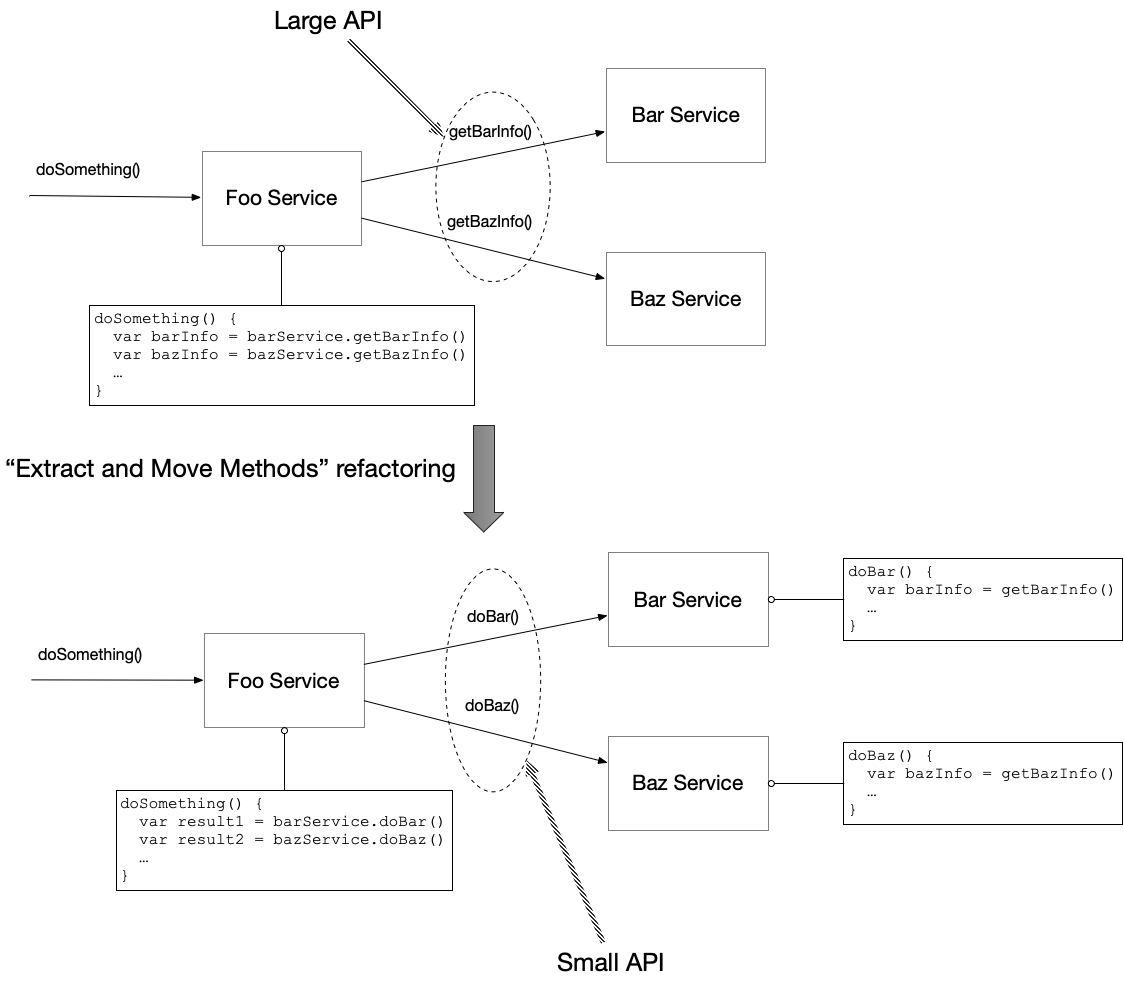Reducing insider trading in a microservice architecture
microservice architecture architecting loose coupling design-time couplingContact me for information about consulting and training at your company.
The MEAP for Microservices Patterns 2nd edition is now available
During a workshop I taught this week, we had an interesting discussion about a common microservice architecture design problem:
The
doSomething()operation, which is implemented byFoo Service, needs to get data from numerous services includingBar ServiceandBaz Servicein order to respond to a request. Getting the data via their APIs seems lot of work. Why can’t it just query the databases directly?
Here’s my answer:

Read on to learn more.
Services must be loosely design-time coupled
A defining characteristic of the microservice architecture is that services are loosely design-time coupled. Consequently, services should not share their databases with other services since it results in type design-time coupling. Service must, instead, collaborate via their APIs.
APIs don’t guarantee loose design-time coupling
You might be tempted to think that as long as services communicate via their APIs, they are loosely design-time coupled.
Foo Service could, for example, query each of the other services: ie. invoke getBarInfo(), getBazInfo(), etc.
Alternatively, it could use the CQRS pattern
The problem with both of these approaches is that they don’t guarantee loose design-time coupling.
A service API might simply expose its database schema through its API.
It’s insider trading
One service retrieving data from another service can sometimes resemble the Inside Trading code smell. The service behaves like a class (or modules) that accesses the internal data of another class (or module). And, just like Inside Trading between classes, it can lead to a tightly coupled design that is difficult to understand, maintain, and evolve.
Design services to look like icebergs
A service should resemble an iceberg.
Its API should encapsulate the implementation details.
We can increase encapsulation in the above example by refactoring the doSomething() operation and moving the logic that uses some other service’s data from the Foo Service into the other service.
The doSomething() operation then invokes an operation on each of the services that executes the service-specific logic.
It would, for example, invoke doSomethingBar() on the Bar Service and doSomethingBaz() on the Baz Service.
Such an approach can significantly increase encapsulation and reduce design-time coupling.
Applying the idea to takeout burritos
In my QConPlus 2021: Takeout burritos and minimizing design-time coupling in a microservice architecture talk, I applied this idea to the Order Service and Restaurant Service example.
Originally, the Order Service’s createOrder() operation retrieving a restaurant’s menu to validate the line items and compute the Order’s subtotal.
The drawback of this approach is that the Order Service is tightly coupled to the Restaurant Service: any change to the structure of MenuItem in the Restaurant Service would require a lockstep change in the Order Service.
The solution was to reduce design-time coupling by moving responsibility for knowing the OrderLineItems and computing the Order’s subtotal into the Restaurant Service.
The Restaurant Service simply passed the Order subtotal to the Order Service.
Need help with modernizing your architecture?
I help organizations modernize safely and avoid creating a modern legacy system — a new architecture with the same old problems. If you’re planning or struggling with a modernization effort, I can help.
Learn more about my modernization and architecture advisory work →


 Premium content now available for paid subscribers at
Premium content now available for paid subscribers at 




